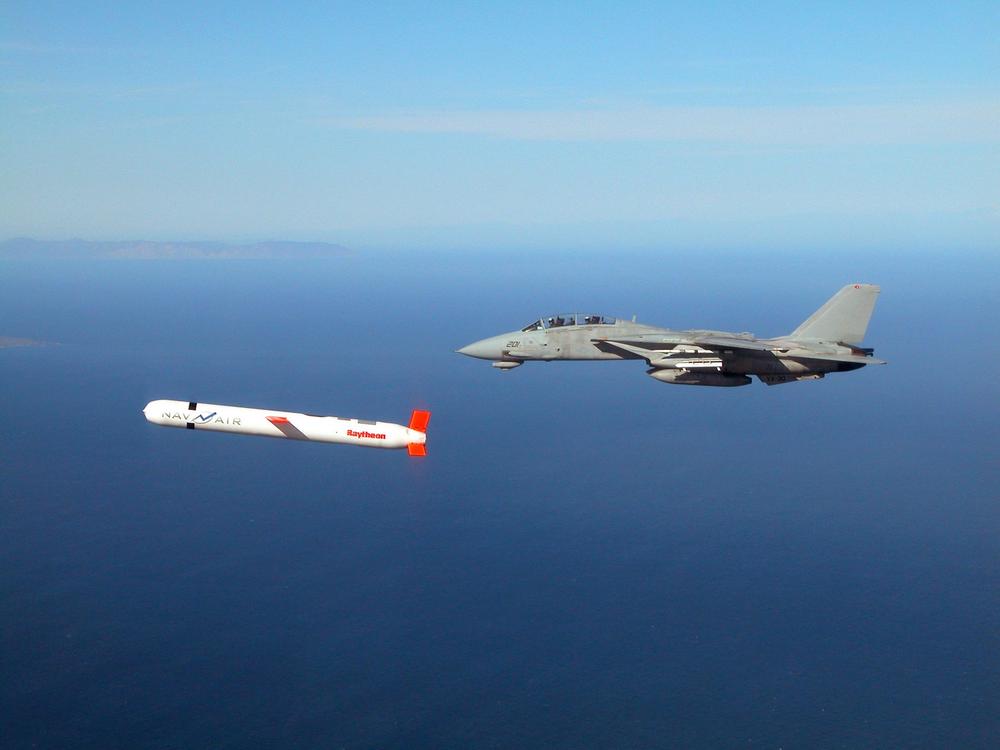In what would be a significant boost for Ukraine's offensive firepower capabilities, U.S. Vice President JD Vance confirmed on Sept. 28 that the U.S. is "looking at" providing Kyiv with Tomahawk missiles.
"It's something the president is going to make the final determination on. What the president is going to do is what's in the best interest of the United States of America," Vance told Fox News in an interview.
"I know we're having conversations this very minute about the issue," Vance continued.
President Volodymyr Zelensky asked Trump to supply Kyiv with Tomahawk long-range cruise missiles during a meeting with the U.S. president on the sidelines of the United Nations General Assembly, the Telegraph reported on Sept. 26.
"(Tomahawks) would definitely be a significant upgrade for Ukraine’s arsenal, especially in terms of long-range strike capabilities," Federico Borsari, a fellow at the Center for European Policy Analysis (CEPA), told the Kyiv Independent earlier this year.
"It would allow Ukraine to deliver a much heavier payload against targets compared to what it’s using now."
What is a Tomahawk missile?
The Tomahawk is a subsonic, long-range cruise missile designed for precision strikes against land targets. It has an operational range between 1,600 and 2,500 kilometers, Borsari said, though he added any version Ukraine received could be limited to 1,700 kilometers.
They were first used in combat during Operation Desert Storm in 1991 and remain a key part of the U.S. long-range arsenal. Each missile costs around $2 million and is manufactured by Raytheon.
"Currently, I would say it is the main tool for the U.S. to strike land targets very far away and is launched mostly from naval platforms, including submarines and surface ships," Borsari said.
The Tomahawk can fly at low altitudes and conduct evasive manoeuvres to minimize the risk of being intercepted. The latest version of the missile can also be reprogrammed mid-flight and can even loiter over a target before striking.
"It’s a very fast, though still subsonic, cruise missile. It uses a combination of different guidance systems to be very accurate," Borsari said, saying it can hit a target within "around 30 meters, if not less."
The Tomahawk also carries "a very powerful warhead weighing around 400 to 450 kilograms, depending on the configuration," he added.
Why Ukraine wants Tomahawks
Tomahawks have been on Ukraine's weapons wish list for a while now, and were included in President Volodymyr Zelensky's "Victory Plan," which he presented to then-President Joe Biden in October 2024.
Russia has a vast advantage over Ukraine when it comes to missiles, and regularly uses its own cruise missile systems, such as Kalibr, to strike Ukrainian cities, as well as ballistic systems such as Iskander.
In terms of cruise missiles, Ukraine is currently reliant on Western-supplied weapons such as Storm Shadow which have been used to great effect but only have a range of around 250 kilometers.
For longer-range strikes, Ukraine is currently reliant on drones and drone-like missiles like the Palianytsia.
"Drones do cause damage — they can fly into windows at defense factories deep in Russia's rear," Ivan Stupak, a former SBU officer and a former Ukrainian lawmaker, told the Kyiv Independent earlier this month.
"If they attack us, we will answer them."
"But let's be honest, 50 kilograms of explosives are just 50 kilograms — 500 kilograms in a missile can make a difference."
Ukraine does have its own domestically-produced cruise missile, the Flamingo, with a claimed range of 3,000 km and capable of carrying a 1,150-kg warhead.
But serial production is not expected to begin until next year so isn't currently available in significant numbers, though it was reported that it was used in a recent strike in occupied Crimea.
What could Ukraine hit with Tomahawks?
The Tomahawk's range would open up great swathes of Russia to Ukrainian long-range missile strikes, most notably Moscow and St. Petersburg.
Ukraine currently regularly targets the Russian capital with drones, and though these rarely cause damage, they do have a psychological effect on the Russian population as well as causing widespread disruption, particularly through the closing of Russian airports.
"These disruptions are not accidental. They are part of a pressure campaign against logistics, air defense systems, and public morale," Serhii Bratchuk, spokesperson for the army's Southern Operation Command, told the Kyiv Independent in May.
"The Russian population has to pay for this war. Sleeping in tents at the airport is not the highest price, but it does affect morale."
Tomahawks would allow for far more accurate and powerful strikes on Moscow, something alluded to by Zelensky in a recent interview.
"They will have to know where the bomb shelters are," Zelensky said of Kremlin officials. "They have to know that we in Ukraine will answer. If they attack us, we will answer them."
Another target that would likely be high on Ukraine's target list are the airbases from which Russia launches mass missile attacks against Ukrainian cities.
Ukraine has long struggled to target them as Moscow has kept its air fleet out of range of weapons Kyiv has developed domestically, as well as those supplied by its Western countries.
This changed with Operation Spiderweb, which saw the audacious use of first-person view (FPV) drones deployed inside Russia to target and destroy a significant number of Russian aircraft.
But the operation was a year-and-a-half in the planning and appears, for now at least, to have been a one-off.
Tomahawk missiles would be able to regularly strike the Olenya air base in Russia's Murmansk Oblast, one of the main launchpads for Russian mass missile attacks against Ukraine.
And perhaps most crucially at the current stage of the war, Tomahawks would give a significant boost to Ukraine's increasingly successful campaign against Russian oil and gas infrastructure, a key source of Moscow's revenues helping to fuel its all-out invasion of Ukraine.
"The most effective sanctions — the ones that work the fastest — are the fires at Russia’s oil refineries, its terminals, oil depots," President Volodymyr Zelensky said on Sept. 14.
Ukraine in recent weeks has been causing so many of these fires that Russian diesel exports have dropped to levels not seen since 2020, exacerbating a dire fuel crisis — and that's using mostly just drones.
"Even with just drones —which have a relatively small payload compared to the Tomahawk — you're talking about Russian refineries that have been out for weeks," Scott Lucas, a political scientist and professor of American Studies and International Politics at University College Dublin's Clinton Institute, told the Kyiv Independent.
"The amount of damage a Tomahawk could cause with a direct hit would knock this offline for a much longer period of time. Ukraine is crippling Russia's economy with these strikes, and this is just going to escalate."
The difficulties
Even if the U.S. greenlights Tomahawks for Ukraine, one major question remains.
Vadym Skibitskyi, the deputy head of Ukraine’s military intelligence agency (HUR), told the Guardian on July 15 that Tomahawks "are not easy to use."
"The main launch platforms are combat ships or strategic bombers. We don’t have any strategic bomber aircraft," Skibitskyi said.
This lack of launch platform would mean the U.S. would also have to provide one.
"Presumably they would need to come with Typhon launcher systems," Fabian Hoffmann, a doctoral research fellow at the University of Oslo who specializes in missile technology, told the Kyiv Independent.
Manufactured by Lockheed Martin, the Typhon is a mobile launcher designed to fire several different missile types including Tomahawk.
Tomahawk alternatives
As discussions around long-range Western weapons continue, other systems may be more feasible for Ukraine in the near term.
"When we think about potential weapons the U.S. could provide to Ukraine with longer range than ATACMS, we should look at, for instance, the Joint Air-to-Surface Standoff Missile (JASSM)," Borsari said.
"It has a range of roughly 1,000 kilometers, it’s very powerful, and it could be a good solution for Ukraine — and much easier to integrate into Ukrainian aircraft compared to the Tomahawk."
And there is another option on the horizon — Germany will provide Ukraine with new long-range missiles "very shortly, very soon," German Chancellor Friedrich Merz said on July 17, without mentioning the name of the weapons being supplied.
"Ukraine will be much better positioned and use these systems and get the support of us with regard to those systems in the weeks and months to come," Merz said.

 Apple Powerbeats Fit ufficiali: il nuovo standard per gli auricolari da allenamento?
Apple Powerbeats Fit ufficiali: il nuovo standard per gli auricolari da allenamento?